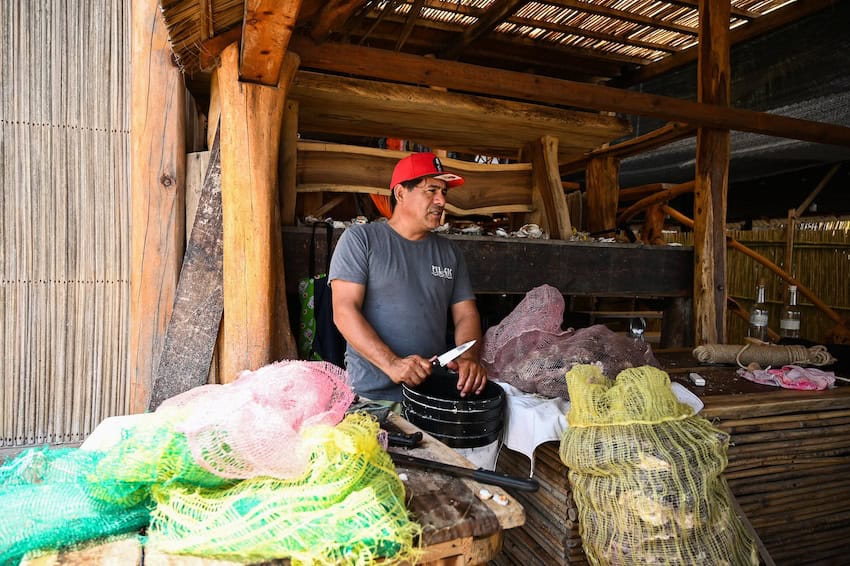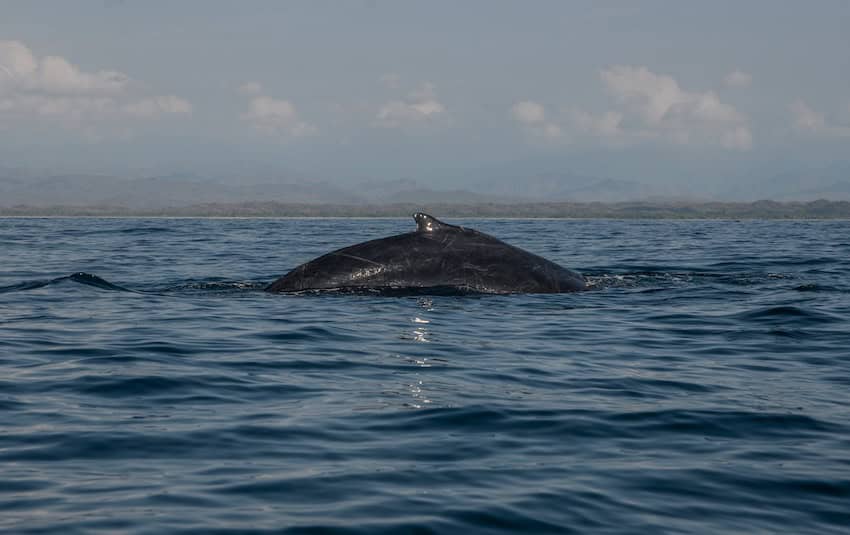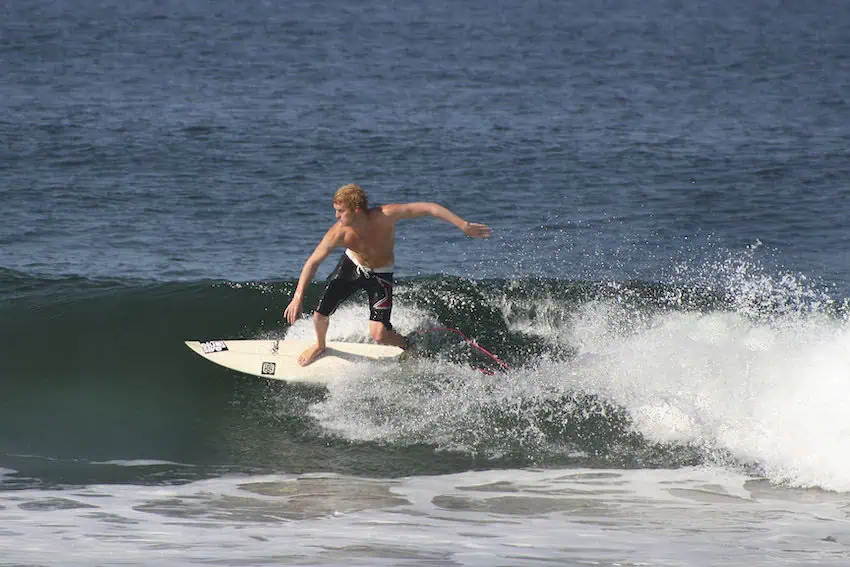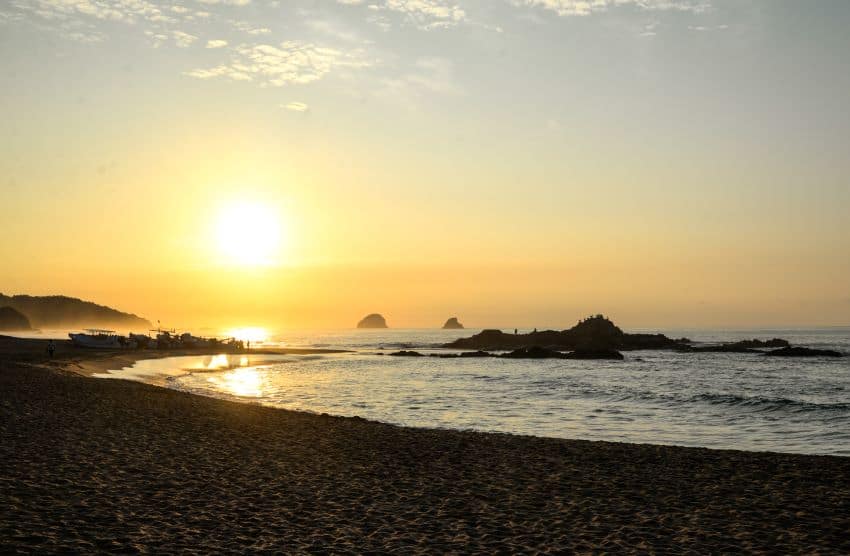Last week, I finally made the journey from Oaxaca city to the Pacific coast on the new “super-highway,” which opened in February. The has more than halved the drive from Oaxaca City to Puerto Escondido, which has dropped from seven hours to under three. Rather than winding over the mountains, the route uses tunnels and bridges to cut through, shaving off almost 90 kilometers.
I first visited Oaxaca over 20 years ago. My family and I took the bus over the mountains from Oaxaca city to the town of San Pedro Pochutla, near the coast, which serves as a hub to reach the numerous bays near Puerto Escondido. As a British teenager, the Oaxacan beaches were as close to paradise as I could imagine, with their turquoise waters, towering palms and tropical vibes.

Over the years since then I have explored many of Oaxaca’s most popular beaches, as well as some of the more hidden ones. I have driven, bussed and flown in a tiny Aerotucan plane. Nowadays regular flights to Puerto Escondido and Huatulco from Mexico City have increased the amount of visitors to each and driven the expansion of local infrastructure.
Huatulco
Huatulco has long been known as more of an Acapulco-style resort location, developed by the National Fund for Tourism Promotion (Fonatur). Deterred by this reputation, I didn’t visit until recently. However, Huatulco has nine bays and 36 beaches, many of which are still virtually untouched by tourism.
Last time I went I was based in La Crucecita, a small town slightly inland. From there I walked to bays like Entrega, Violin and Maguey.
Unlike the high rise hotels that you find in other parts of Huatulco, Entrega has more of a family feel. It was busy when I was there on a Sunday in the December high season, but it felt quite local with fishermen offering fresh clams and oysters.

Violin isn’t far from Entrega, up the main road and then down a steep path to reach vivid blue waters. If you can make it, you will likely have the beach to yourself.
From there, the walk on the footpath is a tough and very exposed one. There are tours that take you through the eco reserve, stopping at amazing beaches like Cacaluta. It is important to be cautious here, as this wild beach has small waves but often a strong undercurrent. Some days it’s not possible to swim at Cacaluta at all, so do check the conditions. This beach was used for scenes in Alfonso Cuarón’s “Y Tu Mamá También,” a story about chasing the dream of remote paradise.
The furthest point I walked to was Playa Maguey, which was sweet and peaceful at the end of a challenging road hike. If you aren’t up for the hike, getting around by boat is the easiest way to find the more remote bays. One particular bay I have spent some wonderful days in is San Agustin, known to have some of the best snorkelling in Mexico.
The first places I went with my family were Mazunte, San Agustinillo and Zicatela. Unsurprisingly, these places have changed over the years, with more restaurants and hotels. Yet they still preserve their unique personalities, as do many of the bays that stretch along the coastline of Oaxaca.
Mazunte

The first place I ever stayed in Mazunte was an eco-lodge on the hill overlooking the bay. There was no electricity, and it really felt like a hidden oasis. Now it has become a favorite with travelers looking for wellness retreats and a place to meet other travelers. Mazunte is the only one of Oaxaca’s beach towns designated as a Pueblo Mágico. It is also home to the National Mexican Turtle Center at the community-managed Laguna Ventanilla.
There are technically three beaches in Mazunte: the main beach, Playa Mazunte, which then curves around to Rinconcito and Playa Mermejita. I have spent the most time at Rinconcito, where the beach dips quickly into deep water. Although deep, the beach is protected, so you can float in the water without worrying so much about currents.
Being protected means you don’t get much of a sunset at Mazunte or Rinconcito, but you can take a paddle board round to Punta Cometa to see a spectacular one at Oaxaca’s southernmost point. Round the point of Cometa is Playa Mermejita where there is a growing scene of boutique hotels. Mermejita is not safe to swim, but its black volcanic sands and amazing sunsets give it a magical quality.
For a truly relaxing beach vacation, San Agustinillo is perfect. The village being a fifteen-minute walk from Mazunte means you can find the social aspect of Mazunte when you want but can go back and chill in San Agustinillo when you need a break. I usually stay to the point furthest right of the bay, where the fishermen hang out by their boats in the afternoon before surfing in the evening.
These fishermen also offer dawn trips in their boats to see the area’s abundant marine life. I’ve had amazing experiences with Pacifico Mágico tours, seeing whales, turtles and rays and swimming with dolphins.
Zicatela

Zicatela is one of Oaxaca’s best-known beaches. Located near the Puerto Escondido airport and bus terminal, it has a great food and nightlife scene. Nicknamed the Mexican Pipeline, Zicatela is a professional surf destination during the summer and fall. It’s not safe for swimming, but walking the beach’s shore is beautiful, as waves rise up to reveal fish and rays like a window into the ocean.
If you are looking for beaches further from the beaten path in the vicinity of Puerto Escondido, to the west are Playa Bacocho and the hidden Playa Coral. About a 30-minute drive east is Agua Blanca. If you are driving the new highway, it’s a short drive, exiting at kilometer marker 172. From there, it’s approximately two kilometers to the beach.
Agua Blanca

Following last week’s drive on the highway we settled in Agua Blanca, staying at a newly-built boutique hotel called Casa Utopia del Mar, perched at the far right of the small town. It seemed like we had that bit of the beach to ourselves, enjoying dawn, dusk and the eclipse in peace. The ocean was a bit rough to swim, but with a private pool overlooking the beach we had the best of both worlds.
Agua Blanca has stunning rock formations just off the shore that create rock pools perfect for exploring. It is also the best place I have been for oysters, where you can get fresh food at most of the small restaurants nestled along the coast. We shared some mezcal at one of these local spots called Cocodrilo, where we spotted owner Luis García opening oysters with a hatchet.
García moved to Agua Blanca in 2016 when it had still felt very secluded. “The reason I moved to Agua Blanca is because it is a very quiet place,” he told me. “At night all I can hear is the ocean waves and the water moving making splashes.” In 2022, he developed his restaurant. “This place is very famous because of the oysters. The people also go fishing and free diving for their own seafood like octopus and lobster.”
With regard to the new highway, García said that he knows the place will change eventually, but for now “no place is comparable to the beauty of Agua Blanca.”
Despite development, Oaxaca is still full of hidden secrets

Undoubtedly we will see considerable change as the Oaxaca coast opens up to tourists beyond its most famous bays. More and more of my friends are choosing to visit beaches near Puerto Angel that still have a fishing vibe, instead of the classic surf beach combo of Zicatela, for example.
Other favorites with travelers who are happy to commit the time to get off the beaten path include the lagoons of Chacahua and the dunes of Chipehua. These are both several hours from Puerto Escondido and Huatulco, respectively.
My friend describes the experience of visiting Chacahua: “The magic is taking the collectivo boat about 45 minutes through the mangroves and arriving where the lagoon meets the sea. When you get off the boat there is only one way to go, and that’s towards the ocean side. You can instantly spot anyone who just arrived based on the confusion on their faces while they’re trying to decide which cabana they want to stay in. Everything is cash. If you run out there are no ATMs but you can buy cash with your card at the supermarket for a 10 percent fee.”
Chacahua is a location that locals and those in the know guard fiercely. Hopefully, the opening of the road will encourage more people to discover the diverse beauty of the Oaxaca coastline while respecting the areas they are visiting.
The road is free to use for everyone until September 2024. After September, it will continue to be free for state residents with Oaxaca-registered cars, but a toll will be put in place for everyone else. The easiest way to make the journey is via ADO coaches, which run every 1-2 hours and cost 299 pesos.
Anna Bruce is an award-winning British photojournalist based in Oaxaca, Mexico. Just some of the media outlets she has worked with include Vice, The Financial Times, Time Out, Huffington Post, The Times of London, the BBC and Sony TV. Find out more about her work at her website or visit her on social media on Instagram or on Facebook.
